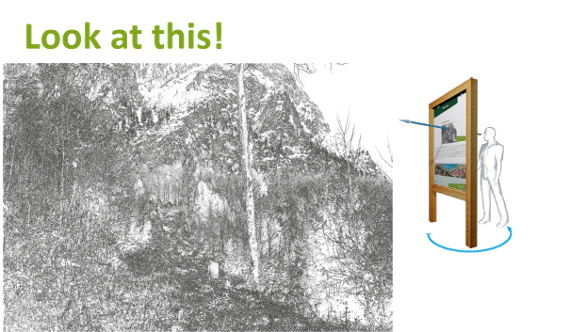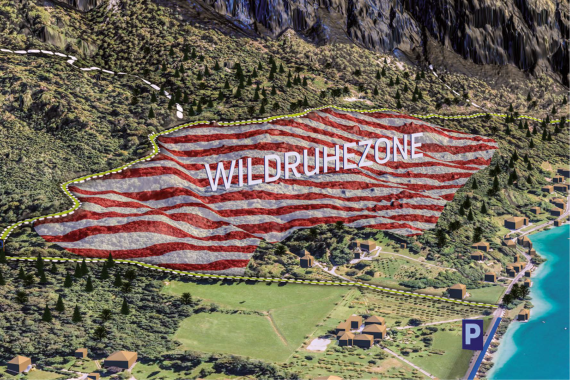By the interaction of tree species, forest structure, soil and vegetation the protective forest has an influence on various natural hazard processes such as avalanches, rockfall or landslides. The wild species living in the forest such as deer or chamois have a direct influence on vegetation, taste young sprouts and the bark of a tree not bad at all! As a result this causes harm in some areas, young trees are missing or the bark injuries are an entry point for wood-destroying fungi. In the protective forest hunters ensure an optimal level of game density - because the protection against natural hazards is top priority here!
The aisle here in the forest is permanently kept clear of tall vegetation to make the wildlife "visible" and thus to make wildlife management as efficient as possible. Look through the window from the back!
In order to keep the influence of game as low as possible, an attempt is being made here in the protective forest to implement a wildlife and visitor management. This involves defining areas where the influence of wildlife should be kept as low as possible and others where it is possible for wildlife to stay without any problems. Forest areas that are particularly vulnerable to damage, such as afforestation, are hunted with emphasis. In order to create a balance and to give the wildlife sufficient space, the established wildlife resting zone (Wildruhezone) serves as a place of retreat. Please respect your boundaries even without a fence and stay on the designated path!
-

© Hannes Kiengraber zoom gallery -
© BMLUK zoom gallery
Buds, fresh shoots and leaves contain many nutrients and are a treat for wild animals. The bark of medium-thick trees is also a favorite snack, especially in winter. However, when this is being done to an extent that is too high, damage is done to the forest stand - and this is most critical in the protective forest!


